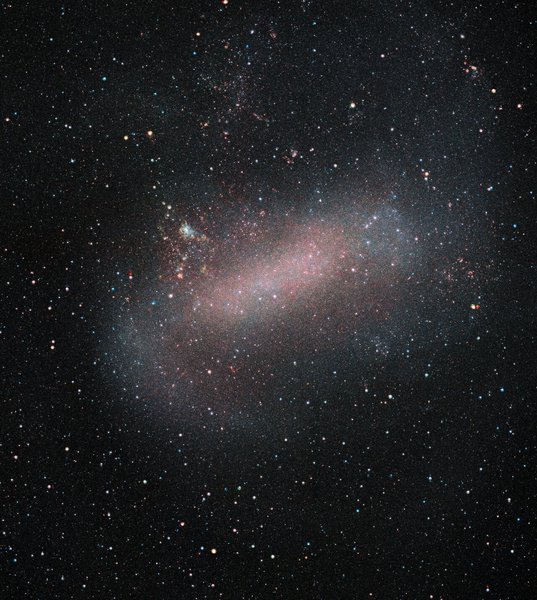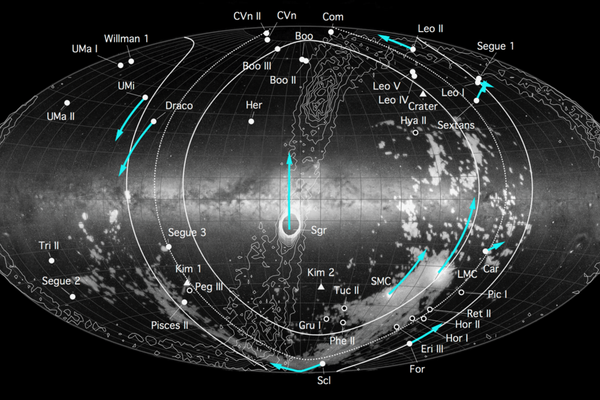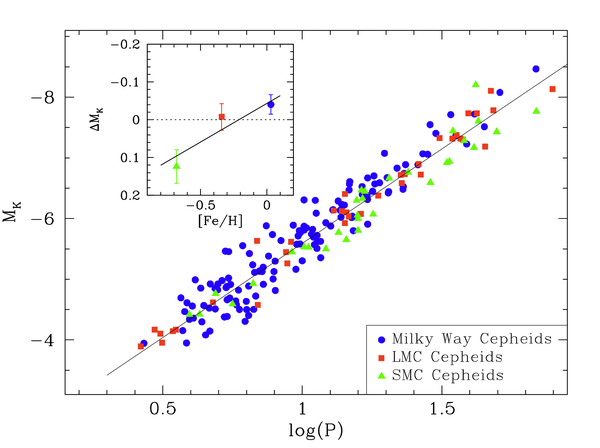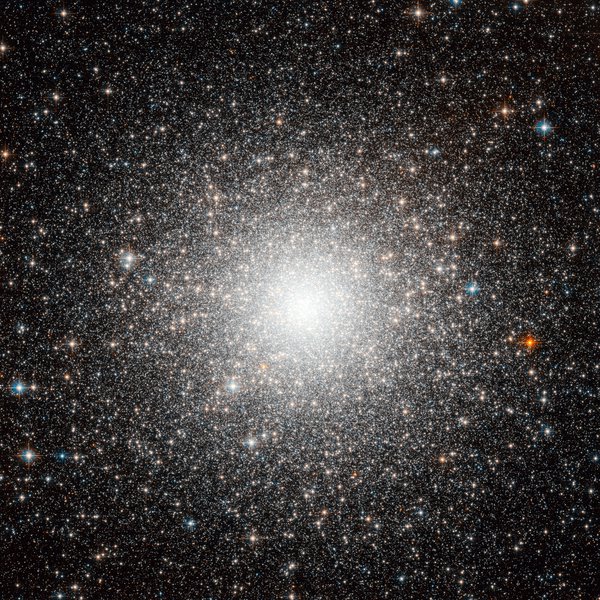Research Topics
Magellanic Clouds

VISTA image of the Large Magellanic Cloud obtained from the VMC survey. The three colours (blue, green red) indicate stars with different properties.
Credit: ESO/VISTA/VMCThe Magellanic Clouds are the largest and most massive dwarf satellite galaxies of the Milky Way. Their proximity makes them an excellent laboratory for the study of stellar populations and galaxy interactions. Our research is focused on understanding the links between the star formation history and the chemical enrichment history with the dynamical history of the system.
We are involved in several photometric projects that observe the Magellanic Clouds at optical (SMASH; DELVE) and near-infrared wavelengths (VMC) and across wide areas, these aim to characterise and trace stellar populations in both central and external regions as well as to uncover substructures, e.g. new satellites. We also lead future large-scale spectroscopic studies of stellar populations of the Magellanic Clouds using 4MOST (1001MC survey) and contribute to complementary observations with MOONS.
Our group has been funded from an European Research Council Consolidator grant (INTERCLOUDS).
Cosmic Coreographies

Distribution and motion of satellite galaxies around the Milky Way
Credit: Pawlowski et al. (2015, MNRAS, 453, 1047)The research project "Cosmic Coreographies" (COSMICOR) investigates the distribution and motion of satellite dwarf galaxies around more massive hosts, both within and beyond the Local Group. Special emphasis is put on comparisons to cosmological expectations, based on numerical simulations of structure formation. The project is funded as a Leibniz Junior Research Group via the Leibniz Competition since 2021, with further support provided via a Klaus Tschira Boost Fund by the German Scholars Organization and Klaus Tschira Foundation.
[more]Cepheids

The luminosities of Cepheids from the Milky Way (metal rich), the Large Magellanic Cloud (metal poor) and the Small Magellanic Cloud (very metal poor) plotted versus the pulsation period.
Cepheids are very bright pulsating stars which are important standard candles through the period-luminosity relation. They are instrumental to calibrate the extra-galactic distance scale. We are studying the effect of metallicity on these calibrations using samples of low metallicity Cepheids in the Magellanic Clouds combined with similar samples of more metal rich Galactic Cepheids. The observational data for these studies have been obtained from many instruments including UVES and STELLA and will continue with 4MOST.
Nuclear star clusters
Nuclear star clusters are ubiquitous among dwarf galaxies and often co-exist with super massive black holes. However, the black hole occupation fraction at the dwarf galaxy mass regime is still poorly studied. One of the most massive globular clusters in the Milky Way halo - M54 is situated right at the centre of the currently accreted Sagittarius dwarf. It is an excellent test bed to study nuclear clusters and the possibility of formation of massive black holes at the centres of the lowest mass galaxies. To date, there is only a tentative evidence that such 104 solar mass black hole exists in its centre. To put this finding on firm grounds we need not only very precise kinematic data in the innermost regions of the system, but also a good understanding of the dynamics in the outer parts, because other effects, such as velocity anisotropy, rotation, binaries, and stellar black hole distributions are degenerate with the subtle effect of the presence of an intermediate mass black hole. We are utilising Jeans dynamical models together with high quality wide field MUSE observations to disentangle the interplay between the various stellar populations in this complex stellar system, thus laying the groundwork for a firm detection or non-detection of a intermediate mass black hole in the centre of the Sagittarius dwarf.
Processing of Gaia images for crowded fields
Gaia's Sky Mapper (SM) instrument observes Service Interface Function (SIF) images from nine selected regions on the sky with high object densities, aka Crowded Fields (CF). These fields include the centres of Large and Small Magellanic Clouds, regions in the Galactic bulge and several globular clusters. The Dwarf Galaxies and the Galactic Halo Group at AIP contributes to the international Data Processing and Analysis Consortium (DPAC) software development, by designing and implementing a specific pipeline for the processing of SIF CF images for Gaia. The aim is to increase the depth of the Gaia catalogue by 1-2 magnitudes in these crowded fields.

